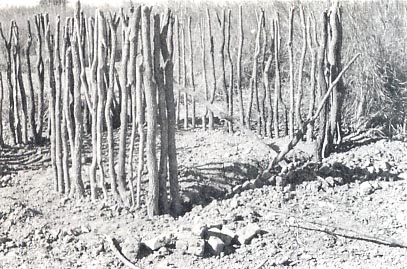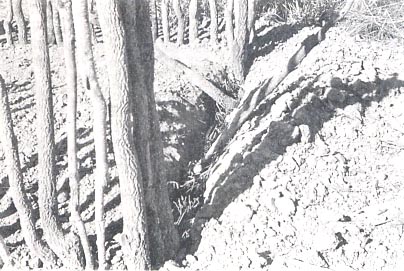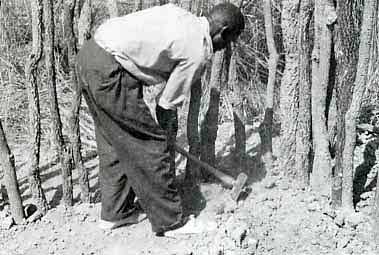AFRICAN HUT CONSTRUCTION (1)
Breaking ground
Photos and captions by John A. HarrisBreaking ground | Preparing materials | Walls begin | Walls built | Roofing begins | Roof takes shape | Towards completion |
The so-called "mud hut" is the archetypal African dwelling. Today millions of rural Africans live in dwellings like this. But as people move to the cities, the tradition is becoming a lost art. In rural areas, a man is expected to know how to build his hut. Before marrying, the bridegroom will construct a house, all by hand, all from locally gathered materials. These pictures document Thomas Tembo building his house in Zambia in 1967. These are a rare set of photographs. Most pictures of African hoses only show the completed buildings. Here we only see the basic structure go up. (Photos and captions by John A. Harris) |
Full text documentation of this process
Click below to see the photos and information on African hut construction:
installing uprights
plant sap protection
firming the uprights
INSTALLING UPRIGHTS
Click image to return to gallery
These poles are key structural elements. As well as their length and diameter, they have been carefully selected for the type of wood, strength, resistance to insect attack and straightness—and then freshly harvested from the wild bush and savannah forest that is within a short walking distance. Then a trench is dug and the uprights are installed in the trench. |
PLANT SAP PROTECTION
Click image to return to gallery
Termites (Isoptera) rapidly destroy most dead wood in the African tropics. Since the house uses wood for its main structures, protection is essential. Hence, poisonous plants are used. In this case a euphorbia with its thick white sap is used. The sap is a toxic irritant, sure to discourage hungry bugs. The plant material is broken up, mashed and buried in the trench around the base of the uprights (you can see the twigs if you look closely). The protection lasts several years. |
FIRMING THE UPRIGHTS
Click image to return to gallery
The next step is to fill the trenches and make sure the uprights are firmly in place. Thomas uses a traditional cast iron hoe to tamp down the clumps of earth around the base of the uprights. This is not crucial because with the tied horizontal beams, the entire structure forms a strong and self-supporting basket-like framework. Iron, like that in the hoe, was in use in this part of Africa long before the metal had been discovered and used in prehistoric Europe. |




